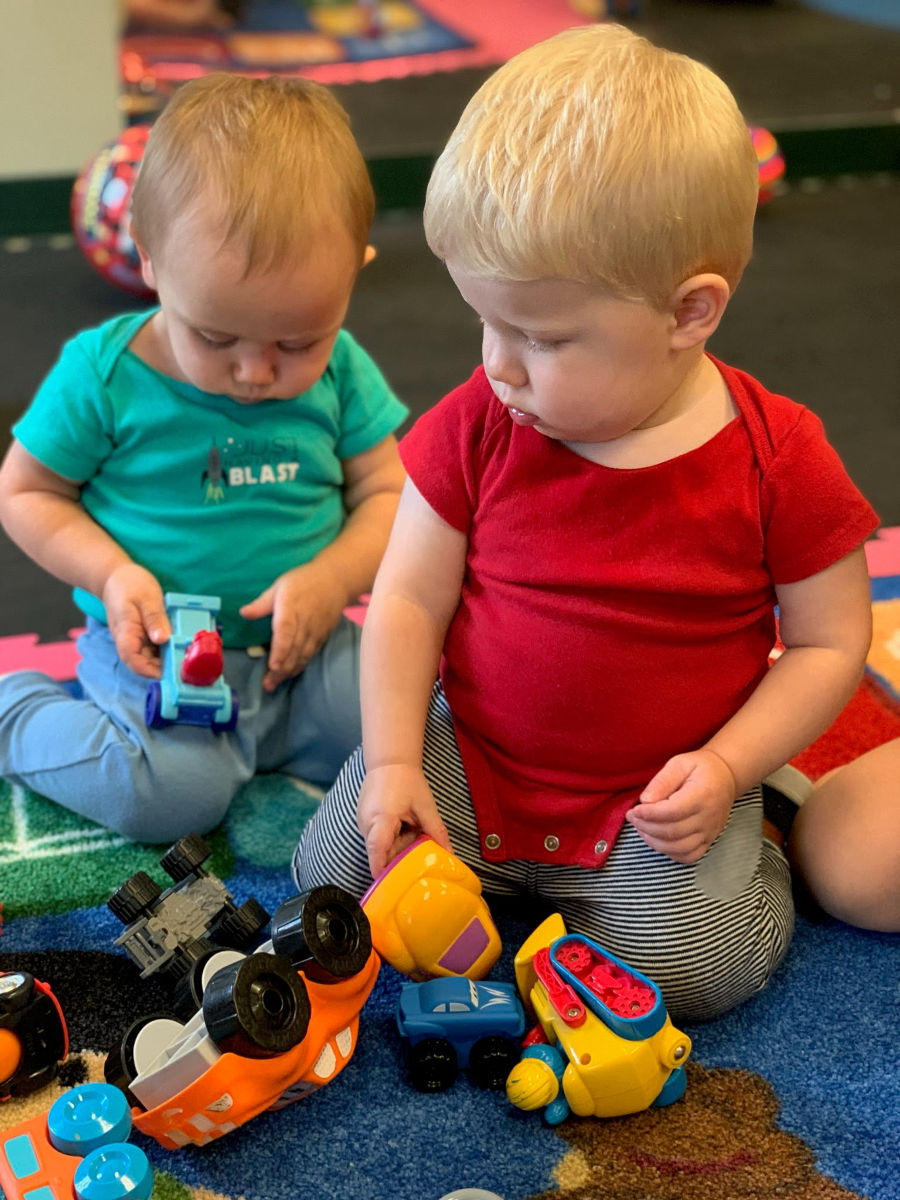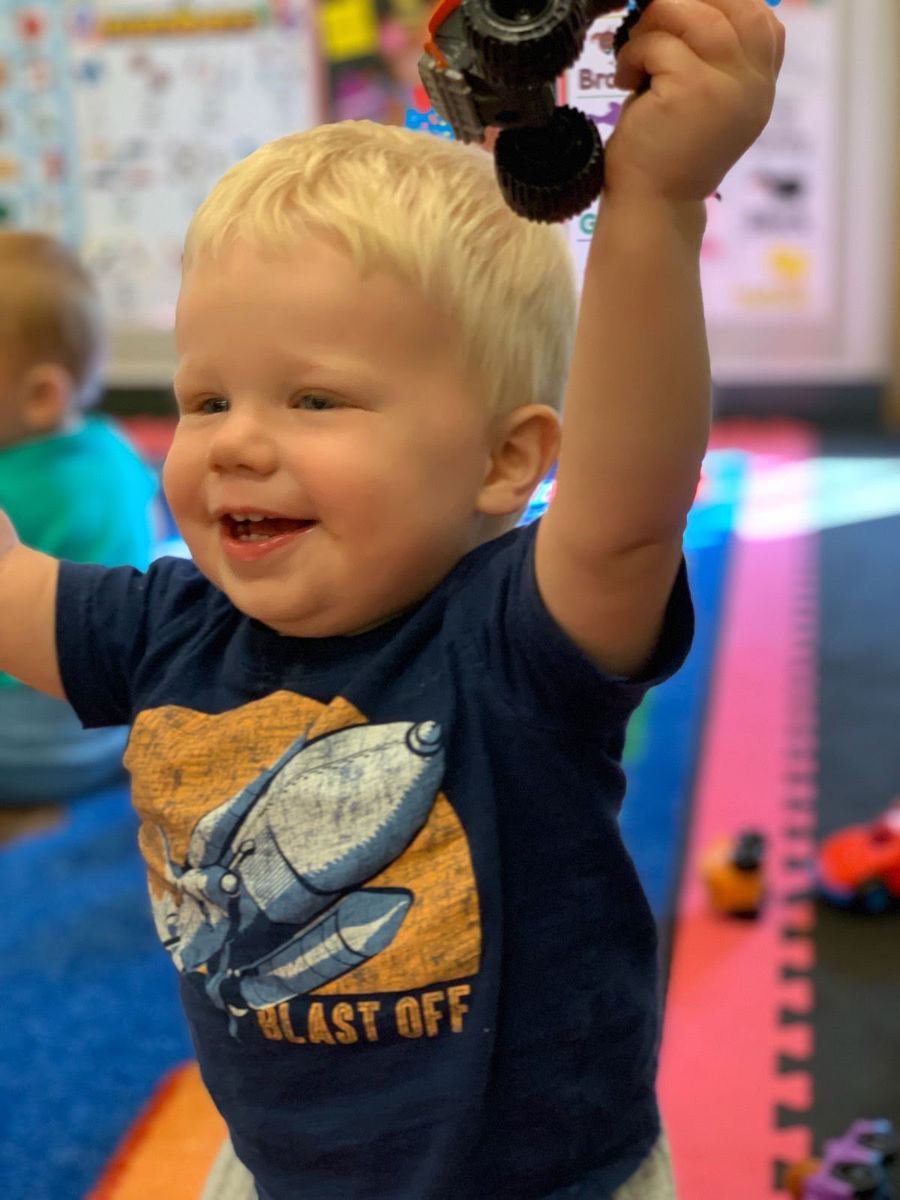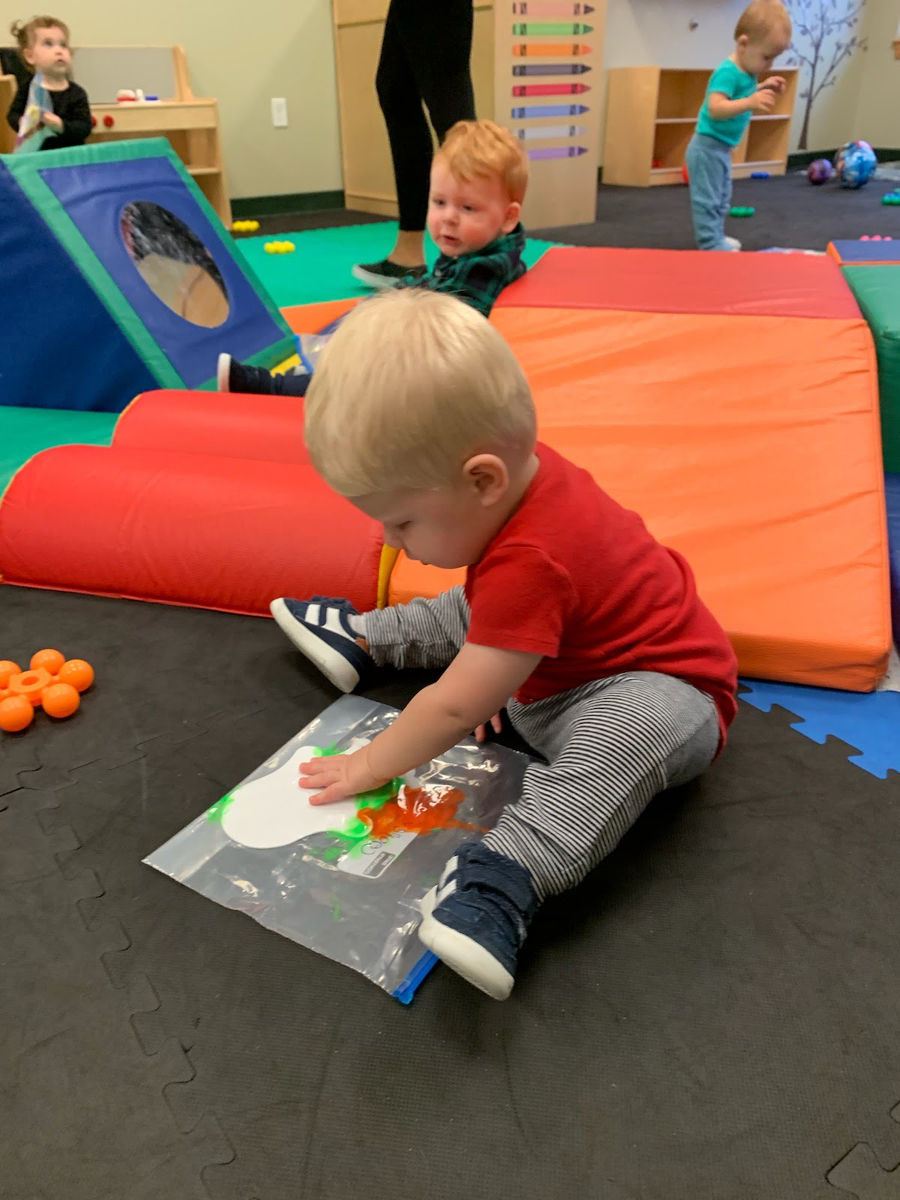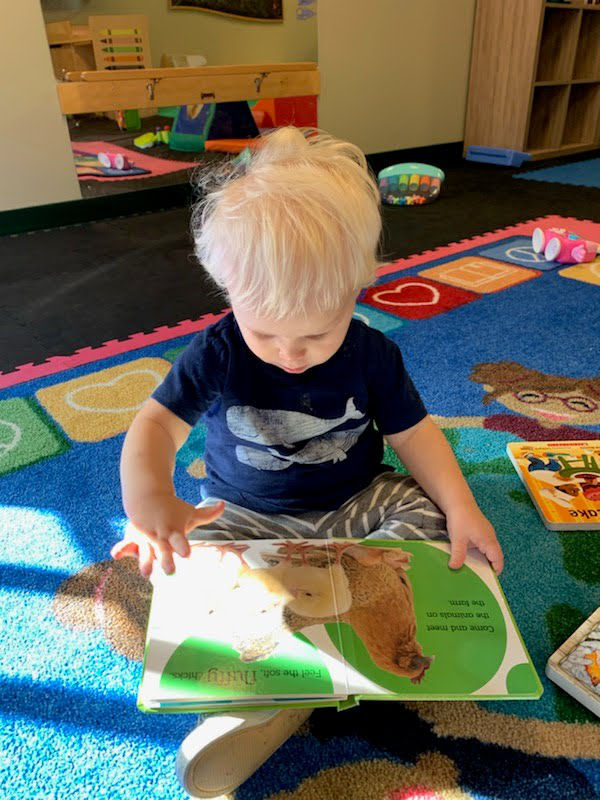Child Care: Transitioning From Infant to Toddler
The Roley Poley Program
Watching your infant develop into a toddler at Castle Academy is an extremely precious and exciting time.
Castle Academy’s Roley Poley Care Program is design to help your child transition from an infant into a toddler. This room is considered a transitional environment. Children move up to the Roley Poley room at approximately 12 months of age. Move ups to the next room are based on your child’s developmental milestones, age and space availability.
The required milestones that must be met before your child can move up to the Roley Poley room is drinking out of a sippy cup, and taking (1) nap daily approximately 1-3pm.
- The Creative Curriculum is continued to be used to prepare the lessons, along with additional structured activities including: Circle Time, Outside Time Sensory & Art.
- Each day all surfaces are sprayed with bleach to make sure the room is properly sanitized.
- Throughout the day the room and toys are cleaned and sanitized.
- Trash is frequently removed from the room to control odors. Cleanliness is a critical part every room at Castle Academy.
- The ratio of children to teachers is 5 to 1. All of our teachers have multiple years of childcare experience in various facets of the industry.
- Diapers are changed every 2 hours or sooner if necessary.
Development Goals
Social/Emotional
- Trust known, caring adults
- Begins to develop own behavior
- Begins to manage own feelings
- Begins to mirror other’s expressions/feelings
- Watches and responds to others’ expression/feelings
- Shows interest in being with others
- Begins to participate as adult tends to personal needs
Physical Development
- Begins to move more purposefully
- Begins to gain balance and move from place to place
- Uses whole hand to grasp and drop objects
- Uses thumb and index finger to grasp and drop objects
- Attends to sight and sound with more interest
- Explores objects and notices how they react
- Demonstrates awareness of a problem
- Watches the actions of others
Language Development
- Engages in simple, back and forth vocalizing
- Manipulates books as adult reads
- Notices pictures
- Notices drawing and writing tools
- Shows interest in speech of others
- Uses facial expressions, body positions, movement, and distinct cries or other vocalizations to communicate
- Gestures, babbles and combine sounds to communicate
“I am always so amazed and impressed when I leave a leave from any holiday or special function at your school at how much time and effort goes into every detail. I just wanted you to know it doesn’t go unnoticed. Thanks again.”





